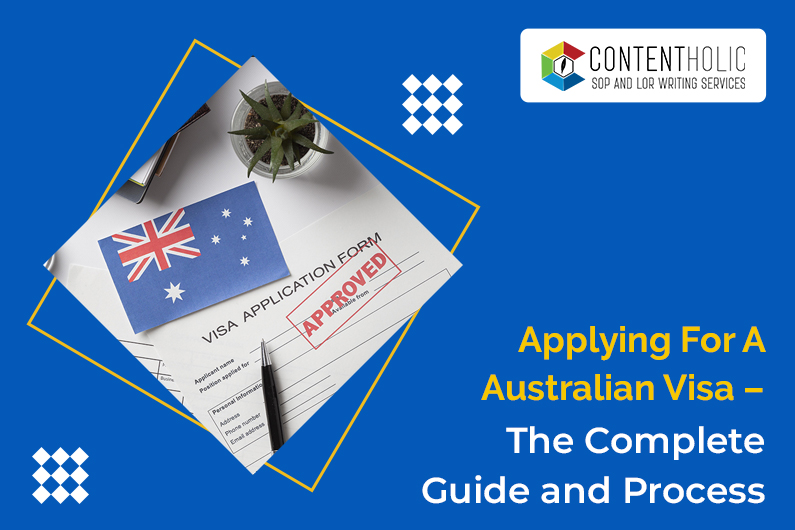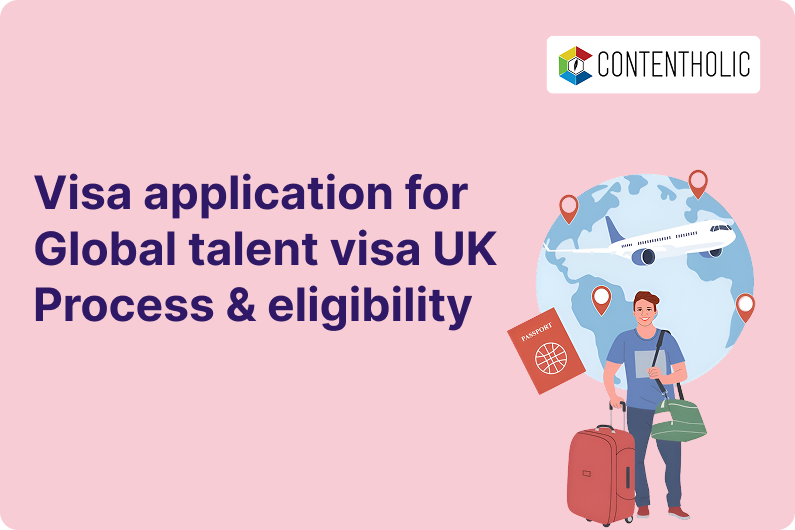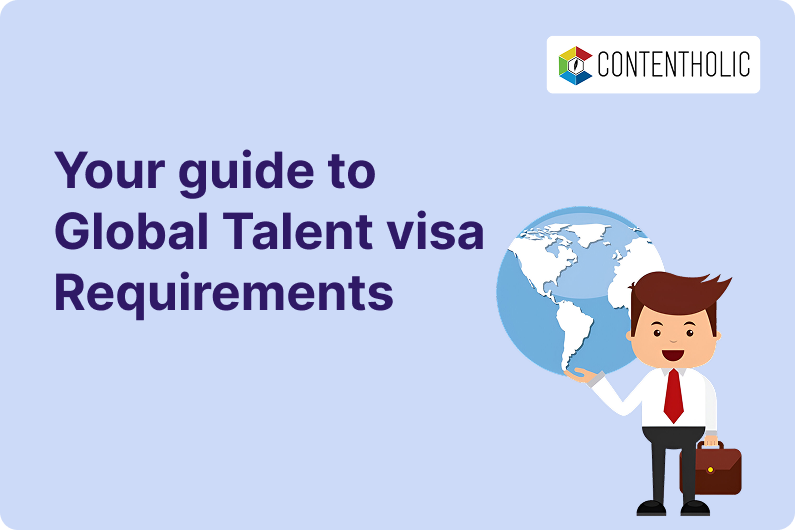Are you considering a move to Australia but unsure about the process and requirements? Don’t worry, this comprehensive guide has got you covered. Moving to Australia offers numerous benefits, including a high standard of living, excellent education, quality healthcare, favorable work-life balance, and employee benefits. From the advantages of relocating to Australia to selecting the appropriate visa, we’ll provide you with all the information you need.
Why Australia?
The country’s high immigration rate can be seen in the fact that nearly 25% of its population, with almost 22 million people living in the country, are immigrants. That’s because moving to Australia offers numerous benefits, including a high standard of living, excellent education, quality healthcare, favorable work-life balance, and employee benefits.
- It is an attractive destination in the 21st century for business development and growth because of the availability of huge natural resources and the rapidly evolving economy, it is a suitable country for entrepreneurs and investors. The nation even faced no work problems during the global market downturn.
- Australia provides its residents with high living standards; the country has effective and fast transportation facilities to cover large distances between cities. Via transport routes, all cities are very well linked. Above that, you will also appreciate the country’s connection with nature that is a need for a healthy lifestyle.
- Australia provides the spouses of professionally funded workers with both temporary and permanent entry visas with unhindered labor rights. Permanent residents can also sponsor their relatives for the acquisition of the permanent residence.
- With a pollutant concentration of 8 µg/m3, Australia has some of the cleanest air in the world. In major cities such as Melbourne and Sydney, this number is even lower, indicating that residents of Australia enjoy better cardiovascular and respiratory health.
- In addition to providing virtually pure air for its residents to breathe, Australia has also made healthcare a crucial part of its policy for the past three decades. The country is one of the highest ranked in the world in terms of health, health equality, responsiveness, responsiveness equality, and fair financial contribution. It offers a dual system of public and private health insurance.
- Australia is home to globally recognized universities whose graduates are in high demand across various industries. Institutions like The University of Melbourne, The University of Sydney, The University of Queensland, The Australian National University and many more provide students with a diverse range of degree programs, training, and vocational courses, allowing them to freely choose which program best suits their needs.
What is an Australian visa?
An Australian visa is a legal document issued by the Australian government that allows a foreign national to enter, stay, and leave the country for a specific period and for a particular purpose, such as tourism, studying, working, or visiting family and friends.
If you are not a citizen of Australia, then you must have a valid Australian visa to enter the country, except for New Zealand passport holders who can obtain a visa upon arrival. For all other passport holders, regardless of age, they must apply for a visa before departing from their home country. There are different types of Australian visas available depending on the purpose of your visit and the length of stay.
Additionally, Australian visas can be obtained by applying online or through an Australian Embassy or Consulate in your home country.
Australian visa application
A visit or relocation to Australia requires a visa which can be a complicated process unless, on the off chance that you do your research right. It is also essential to know your category before applying so that you can get the right visa and have no problems getting approved. To determine your visa category, you can utilize resources like Find Visa online. Based on the information you provide; the website will produce the most fitting category for your application. This way, you will be aware of the most appropriate Australian visa that aligns with your individual circumstance.
Apart from the numerous types of visas, there are also various application options at hand, depending on your situation and citizenship. That’s why getting through the visa application process for Australia can be a challenging task, it is best suggested to check the step-by-step guide to applying for an Australia visa at your nearest Australian embassy or consulate. Alternatively, if you’re applying online, you can also navigate through by checking the official home office website to look for the exact criteria and eligibility requirements depending on your home country.
Australian visa types
There are various types of Australian visas available, each with its own set of limitations. Below are some examples:
- The most common type of visa is the Australian Tourist Visa, which is primarily intended for tourists visiting the country for leisure or to meet family/friends/relatives. This short-stay visa is valid for a specific duration of either 3, 6, or 12 months, depending on the applicant’s preference. It falls under the visitor category, also known as Subclass 600.
- Another type is the Australia Business Visa, which allows individuals to explore business opportunities in the country. This visa requires an endorsement from the Australian government.
- The Australian Visitor Visa, also known as Subclass 600, is designed for short-term visits to the country. There are three purposes for which this visa can be obtained: short-term business purposes (business stream), tourism or meeting family/friends (tourist stream), or visiting family who is sponsoring the visit (sponsored family stream).
- The Temporary Work Visa, or Subclass 400, permits highly specialized and non-ongoing work in Australia that can be completed within six months or less. The visa allows you to work for up to three months, with the possibility of extension up to six months in certain circumstances.
- The Temporary Activity Visa, or Subclass 408, is issued to individuals traveling to Australia to undertake short-term activities or work. Depending on the purpose, there are several streams, such as religious activities, sports activities, and superyachts, with varying validity periods.
- The Australia Transit Visa, or Subclass 771, is issued for transiting through the country for up to 72 hours, with different rights permitted depending on the circumstances.
- Lastly, there is the Australia PR Visa, which allows individuals and their families to migrate to Australia permanently. Australia’s highly urbanized environment offers plenty of employment opportunities, making it an attractive destination for many.
How to apply for an Australian visa?
Australia offers a range of visa options tailored to meet the needs of different visitors. However, providing the appropriate documentation is crucial in obtaining a visa that meets your specific requirements. For nationals who are exempt from obtaining an Australian visa upon arrival, the responsibility of granting the visa lies with the Australian High Commission.
The Australian government has generally aimed to make the visa application process a convenient and stress-free experience, that’s why in 2015, visa labels for passports were discontinued, and visa records are now accessible through the VEVO service. As a result, the online application has become more convenient for storing all of your information, and the reviewing process is simpler but in total, the government grants two methods to apply for an Australian visa:
- Online application.
- Paper application.
Nonetheless, certain countries or visa types may not be qualified for the online application, making the submission of a paper application via an embassy mandatory. Specific instructions must be followed for each type of application when applying for a visa.
Visa online application
Individuals seeking to apply for an Australian visa have the option to either use the online visa platform or the offline procedure. For those who choose to apply online, the following information can assist in navigating the process and answering any questions related to how and where to apply for an Australian visa:
- Create an IMMI account.
- Select the appropriate visa category.
- Look for the corresponding application form and fill it.
- Carefully attach all the required documents and photographs.
- Pay the visa fees and it should also be made online.
- Submit the application form.
Create an IMMI account
To start the process of applying for an Australian visa, the initial step is to create a personal online account on the official website of the Australian Department of Home Affairs (ImmiAccount).
To make an individual ImmiAccount, choose ‘Create an ImmiAccount’. Then, in the first step, select ‘Individual’ and provide your personal information such as your last name, first name (if applicable), phone number, mobile phone number (if applicable), and email address (twice to verify) and click on ‘Continue’.
The next step, Step 2, is to provide your account information. You can either use your email address as your username or create a new one. Create a strong and secure password and select secret questions from a list and provide their answers. Remember that the answers to the questions are case sensitive, so make sure to enter them exactly as you remember them. You also need to set up security alerts and once your account is created, you can start using it right away. You can make an application, request access to organization services
Through this online service, you can easily manage your visa application, upload your documents, and track the progress of your visa review.
Additionally, there is another option to apply, by creating an organizational online account if the applicant is:
- A registered migration agent.
- Part of an organization.
- Sponsored by a company.
Select the appropriate visa category
As we have already established, the Australian Government offers different types of visas depending on different purposes. Select the appropriate visa category according to your needs.
Look for the corresponding form and fill it
The application form corresponding to your selected visa category can be obtained either by downloading it online or by visiting the nearest Australian Visa Application Center. Keep in mind, it is important for applicants to carefully read all instructions before completing the form, as it contains crucial information regarding your entry into the country, as you may need to state the purpose of your visit to Australia, the duration of your stay, and other relevant details.
Additionally, the form requires you to provide personal details such as your name, date of birth, marital status, and other relevant information and if you are applying with others, each person must fill out a separate application form.
Carefully attach all the required documents and photographs
The application form will specify the required documents, which may differ depending on your visa subtype and application. Generally, you will need to submit documents such as your passport, identity photos, travel insurance, and financial statements but beware of any additional requirements that the visa may have, such as sponsorship, a letter of support or invitation, health requirements, and other such criteria.
To attach documents for an online application, follow these steps:
First, choose the “attach a document” option and indicate who the document is for and the reason for attaching it. Then, specify the document type, name the file, and finally, click on “attach”. If you need to attach a passport photo, select the “attach a passport photo” option.
Additionally, to meet the photo specifications for an Australian visa:
- The photo must be a colored copy and measure 35 mm x 45 mm.
- The head should occupy about 30 mm of the photo frame and be well-centered.
- The photo should be taken recently and no older than six months.
- The background must be white, and neutral expressions are required.
- Glasses are not allowed, and headgear is only permitted for religious reasons.
- Additionally, the clothing worn in the photo should not match the background.
Pay the visa fees and it should be online
Once you have applied for your visa application virtually, it is crucial that the payment is also made online. The online application system offers several payment options, including payment by credit card, debit card, or PayPal. The cost of your visa may vary depending on the type of visa you have applied for. It’s also important to note that the application fee must be paid prior to submitting the application and failure to do so may result in the application not being processed.
Submit the application form
After completing the mentioned steps, you can proceed with submitting your visa application. In case of any changes, such as an address change, through the account, the ImmiAccount system enables you to update the Australian authorities.
You can also use the account to track the progress of your visa application, and the processing time may vary depending on the specifics of each application.
If there are no complications, you may receive your visa within a few days of applying.
Visa paper application
In cases where online applications are not possible, note that paper applications are easily accepted. To apply for an Australian visa using paper application, follow these steps:
- Locate your nearest Australian embassy/Consulate.
- Schedule an appointment with an Australian office.
- Check that you have all the necessary documents.
- Fill the visa application form.
- Pay the application fee.
- Submit the visa application.
Locate your nearest Australian embassy/Consulate
To start your visa application process, you should first locate the closest Australian embassy or consular point accessible near you. Since paper applications need to be submitted to an Australian government representative office, it’s important to identify the embassy/consulate beforehand. In the event that the closest embassy is situated in another state, some paper applications can be sent via post or courier fax, but you should consult with a local embassy to check if these options are available for you but you still would have to consult with a local embassy to check if these options are available for you.
Once you have found the Australian office nearest to you, they can help you determine the most appropriate visa type for your situation and advise on which documents you need to submit with your application.
Schedule an appointment with an Australian office
After locating the nearest embassy, you have the option of either emailing them or visiting them in person to schedule an appointment. Usually, you need to schedule an appointment beforehand to submit your application. Once your appointment has been confirmed, you can begin preparing to apply for your visa.
Check that you have all the necessary documents
After scheduling an appointment, ensuring the authenticity of your documents should be your top priority. It is important to remember that if you are submitting a paper application, make sure to prepare a list of all the necessary documents (such as passport, family certificates, insurance, visa application form, etc.) and attach verified copies of the original documents to your application form.
To verify your documents, you can seek the help of someone who meets the following criteria:
- An Australian citizen
- An individual who holds a profession recognized by the Australian authorities.
- A non-related individual (by birth, marriage, or romantic relationship)
- A citizen of your country of residence
The person who verifies your documents must provide a declaration on a one-page document stating that they confirm the copies of your original documents. If the document has multiple pages, the declaration should be written on the first page and initiated on every subsequent page.
Fill the visa application form
Once you have determined the correct visa category and gathered all the necessary documents, you can fill out the application form. Ensure that you select and correctly fill out the appropriate form and sign it accordingly, the application form itself contains instructions on how to complete it and you have completed filling out the application form, all you need to do is combine it with the other required documents and submit them all together.
Pay the application fee
Here, despite the process being offline your ImmiAccount can be utilized for fee payment. In some instances, it may be possible to pay the fee on the day of application submission but nevertheless, it is advisable to confirm with the Australian visa application center in your area since payment must be completed beforehand.
Submit the visa application
Once your payment is confirmed, the only remaining step is to lodge your application at the nearest embassy. The duration for processing your visa application varies among applicants; however, unfortunately paper applications take longer to process than those submitted online.
Some frequently asked questions (FAQs)
Can I extend my stay?
Whether or not you can extend your stay depends on the type of visa you have. If you have a visitor visa, it cannot be extended, and you will need to apply for a new one after your current visa expires. On the other hand, if you have a student visa, you may be able to extend it by applying for a different type of visa. If you have a permanent visa, there is no need to extend it as it has an unlimited validity period.
Do I need a consultant to obtain an Australian visa?
You may not need a consultant to apply for an Australian visa but if you find the process of dealing with intricate documentation stressful or have a fear of visa denial, it is advisable to do. Consultants are well-versed in the application process, having completed it numerous times, and can provide valuable assistance in navigating the requirements.
Do I need to take a language proficiency test for an Australian visa?
Generally, if you are applying for a student visa, you need to demonstrate your proficiency in the English language by taking a test such as IELTS or TOEFL. For other types of visas, language proficiency requirements may vary, and you should check the specific visa requirements. Moreover, if English is not your native language, you will likely need to take an English language proficiency test as part of your visa application especially if you are applying for a points-based Skilled visa, a positive outcome on an English test can earn you additional points toward meeting the eligibility criteria.
How long will my visa application take to process?
The Department of Home Affairs website displays global processing times for all visa and citizenship applications, which are updated every month to give an approximate idea of how long it will take to process the application. The processing time can vary due to factors like application volume, complex cases, incomplete applications, and seasonal peaks.






